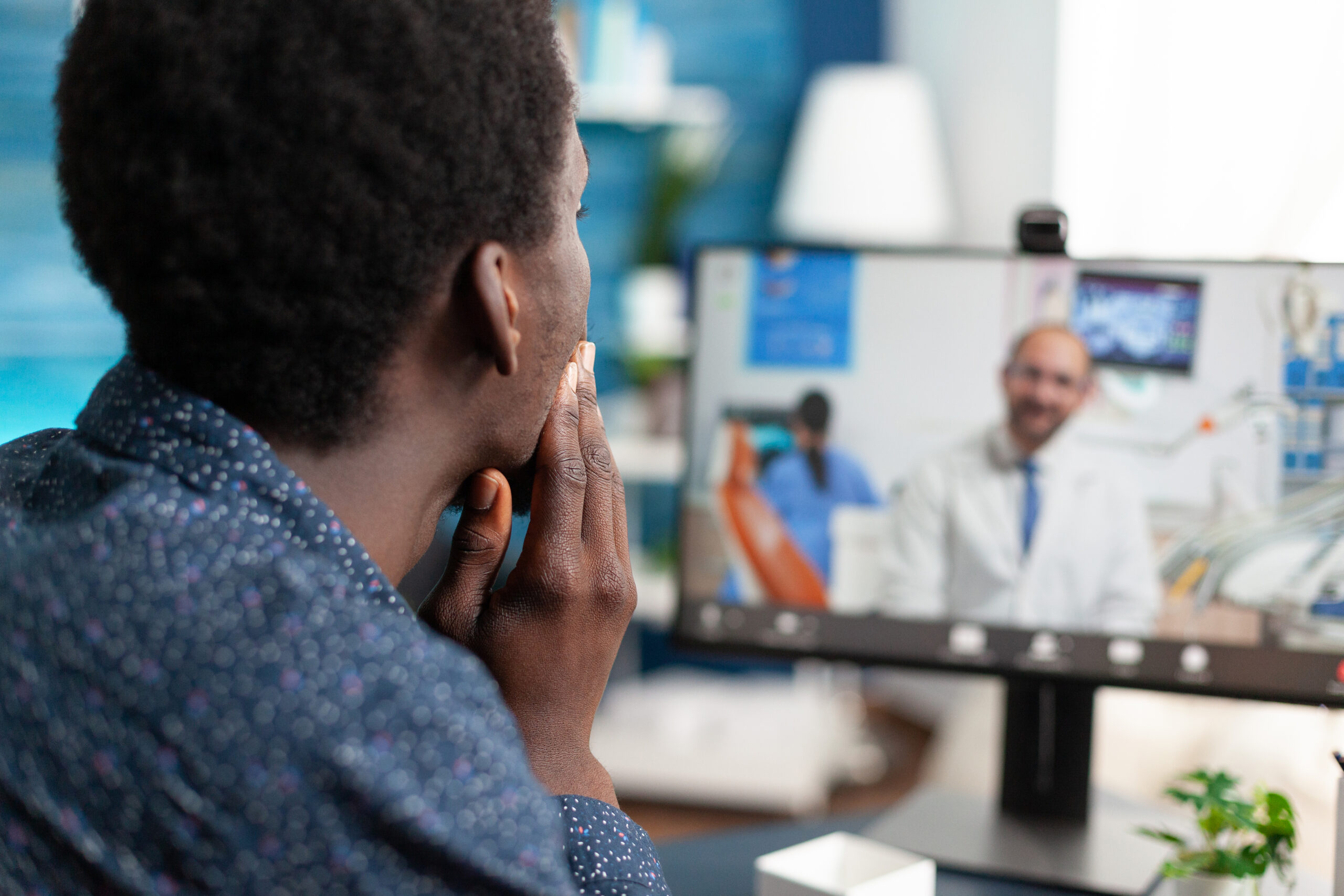The Rise of Telehealth in Staffing and Care Delivery
Telehealth has become a game-changer in healthcare, transforming how medical professionals interact with and treat patients. This innovative approach combines telecommunications technology with clinical practices, allowing for remote consultations, monitoring, and treatment.
The Impact of COVID-19 on Telehealth Adoption
The COVID-19 pandemic acted as a major driving force behind the widespread adoption of telehealth. With healthcare facilities overwhelmed by patient numbers and social distancing measures in place, virtual care solutions became crucial. During this time, telehealth visits surged by 95% compared to pre-pandemic levels, highlighting its critical role in ensuring access to healthcare during emergencies.
Key Staffing Considerations for Successful Telehealth Implementation
Successful implementation of telehealth heavily depends on skilled healthcare professionals who can effectively provide care through digital platforms. Here are some key staffing considerations:
- Training medical staff in virtual care protocols
- Developing new workflows for remote patient management
- Creating specialised roles for telehealth coordination
- Building technical support teams
Adapting Staffing Models to Support Telehealth Integration
Healthcare organisations have adjusted their staffing models to facilitate this digital transformation. Medical professionals now need to possess skills in:
- Digital communication platforms
- Remote patient monitoring systems
- Electronic health record integration
- Virtual care best practices
The Ongoing Influence of Telehealth on Healthcare Delivery
The rapid adoption of telehealth has redefined traditional healthcare delivery methods, establishing a new standard that blends in-person and virtual services. This shift continues to impact staffing strategies, resource allocation, and patient care approaches throughout the healthcare industry.
Telehealth’s Impact on Care Delivery Models and Patient Access
Telehealth has transformed traditional healthcare delivery by introducing flexible care models that go beyond physical limitations. Healthcare organisations now run virtual clinics, remote monitoring programs, and hybrid care systems that combine in-person and digital services. These innovative approaches create multiple touchpoints for patient care:
- Virtual Primary Care – Patients connect with providers through secure video platforms for routine check-ups, prescription renewals, and health consultations
- Remote Patient Monitoring – Continuous tracking of vital signs and health metrics through connected devices
- Store-and-Forward Systems – Secure transmission of medical images and data for specialist review
- Mobile Health Applications – Patient engagement tools for self-management and provider communication
The geographical reach of healthcare services has expanded dramatically through telehealth implementation. Rural communities previously facing hours-long drives to specialty care centers now access expert consultations from local clinics or their homes. A study of remote Native American communities showed a 60% increase in specialty care access after implementing telehealth programs.
Telehealth addresses critical healthcare equity challenges by:
- Reducing transportation barriers for elderly and disabled patients
- Providing language interpretation services through virtual platforms
- Enabling flexible appointment scheduling for working families
- Decreasing wait times for specialist consultations
Remote care delivery has proven particularly valuable for managing chronic conditions. Patients with diabetes, heart disease, and mental health conditions benefit from regular virtual check-ins and monitoring. This consistent connection to healthcare providers helps prevent complications and reduces emergency department visits.
Healthcare organisations have adapted their staffing models to support these new care delivery methods. Virtual care teams now include:
- Telehealth coordinators
- Digital health navigators
- Remote monitoring specialists
- Virtual care nurses
These roles ensure smooth technology integration and maintain high-quality patient care standards across digital platforms. The expansion of telehealth services continues to reshape healthcare delivery, creating more accessible and equitable systems for diverse patient populations.
Staffing Challenges and Adaptations in Telehealth Integration
Healthcare organisations face significant staffing hurdles as they integrate telehealth services into their existing care delivery systems. These challenges manifest in several key areas:
- Technical Proficiency Gaps: Staff members must rapidly develop competency in digital platforms while maintaining clinical excellence
- Workflow Disruptions: Traditional care processes require substantial modification for virtual delivery
- Role Redefinition: Healthcare professionals need to adapt their practice methods for remote patient interactions
- Communication Barriers: Virtual care demands new approaches to patient engagement and team collaboration
Training Requirements for Healthcare Teams
Different healthcare roles demand specialised training approaches to ensure effective telehealth delivery:
Physicians
- Virtual examination techniques
- Digital documentation protocols
- Remote diagnostic skills enhancement
Nursing Staff
- Patient monitoring through digital platforms
- Virtual triage procedures
- Remote care coordination
Support Personnel
- Technical troubleshooting
- Digital appointment scheduling
- Virtual waiting room management
Technology Utilisation and Role Variability Among Healthcare Professionals
The telehealth ecosystem encompasses diverse technological tools requiring specific competencies:
Core Technologies
- Video consultation platforms
- Remote patient monitoring devices
- Digital health records systems
- Mobile health applications
Healthcare teams must develop proficiency across multiple platforms while maintaining seamless care coordination. This technological integration creates new specialised roles:
- Virtual Care Coordinators: Managing digital patient flow
- Telehealth Technical Specialists: Providing real-time support
- Remote Patient Monitoring Nurses: Tracking vital signs and patient data
- Digital Health Educators: Training patients in technology use
Interprofessional collaboration takes new forms in virtual settings. Teams develop innovative approaches to:
- Cross-disciplinary communication
- Virtual care handoffs
- Remote consultation protocols
- Digital team meetings
Staff members increasingly function as both healthcare providers and technology facilitators, requiring continuous skill development and adaptation. Healthcare organisations implement structured mentorship programs and regular training sessions to support this evolution in professional roles.
Conclusion: Embracing the Transformative Power of Telehealth in Staffing and Care Delivery
The impact of telehealth on healthcare delivery goes beyond just technology. It represents a significant change in how healthcare organisations provide care to patients, develop their staff, and deliver services.
Key Changes in Healthcare Delivery:
- Integration of virtual care platforms into standard medical practices
- Emergence of hybrid care models combining in-person and remote services
- Development of specialised telehealth training programs
- Creation of new roles dedicated to virtual care coordination
For telehealth to be successful, healthcare organisations must be willing to adapt and evolve. Those who embrace these changes will be at the forefront of modern medicine, ready to meet the diverse needs of their patients.
Essential Elements for Sustainable Telehealth Practice:
- Continuous staff education and skill development
- Regular assessment of technology infrastructure
- Implementation of quality metrics specific to virtual care
- Development of clear protocols for virtual patient management
- Integration of telehealth into existing workflows
The future of healthcare will likely see an increased focus on value-based care delivered through telehealth. To prepare for this shift, healthcare organisations should:
- Invest in robust digital infrastructure
- Develop comprehensive virtual care protocols
- Create flexible staffing models
- Establish clear quality metrics for virtual care
- Build strong patient engagement strategies
The Path Forward
Healthcare organisations that prioritise telehealth integration while maintaining high-quality patient care standards will shape the future of healthcare delivery. This transformation requires:
“A commitment to continuous improvement, adaptation, and innovation in virtual care delivery methods while maintaining the human connection essential to healthcare.”
The sustainability of telehealth practices depends on:
- Organisational Resilience: Ability to adapt to changing healthcare needs
- Staff Empowerment: Continuous training and support for healthcare providers
- Patient-Centered Focus: Ensuring accessibility and quality of virtual care
- Technology Integration: Seamless incorporation of new digital tools
- Quality Assurance: Maintaining high standards in virtual care delivery
The healthcare landscape is constantly evolving due to advancements in technology and changing patient expectations. Organisations that embrace this transformation while prioritising quality care will lead the way in shaping the future of healthcare.
Conclusion: Embracing the Transformative Power of Telehealth in Staffing and Care Delivery
The integration of telehealth into healthcare systems marks a profound shift in care delivery models. Healthcare organisations must embrace this transformation through:
- Adaptive Staffing Models: Creating flexible workforce structures that accommodate both virtual and in-person care delivery
- Technology Integration: Implementing robust digital infrastructure to support seamless telehealth operations
- Continuous Learning: Developing comprehensive training programs that evolve with technological advancements
The long-term success of telehealth depends on healthcare organisations’ ability to:
- Build resilient systems that can scale with increasing demand
- Foster a culture of innovation among healthcare professionals
- Maintain high standards of patient care across virtual platforms
Healthcare providers who recognise telehealth as a permanent fixture rather than a temporary solution position themselves at the forefront of modern healthcare delivery. This strategic approach enables organisations to attract top talent, optimise resource allocation, and deliver superior patient outcomes through innovative care models.
The transformative power of telehealth continues to reshape healthcare delivery, demanding ongoing adaptation and refinement of existing practices to meet evolving patient needs and healthcare challenges.

